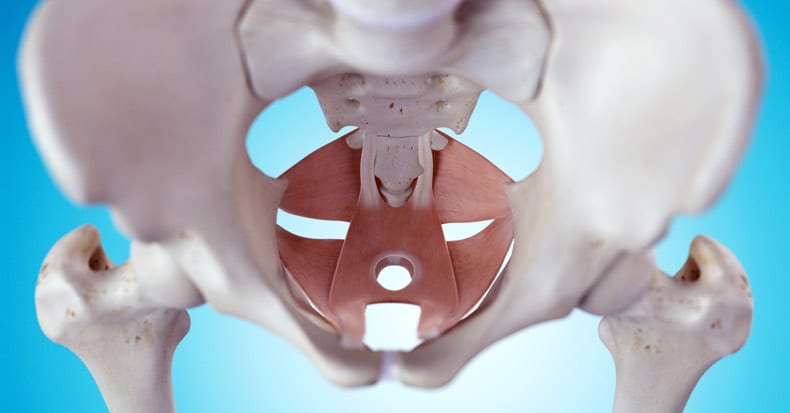The pelvic floor is the muscular “hammock” that carries the weight of the viscera located in the pelvis. If these muscles become too loose or too tight, an individual may experience urinary (or fecal) urgency or incontinence, sexual dysfunction, pelvic organ prolapse, as well as pain in the pelvic region and even in the lower back.
This condition, known as pelvic floor dysfunction (PFD), most commonly affects women (95% of PFD patients are female) with advancing age and a history of multiple childbirths. Many women have PFD but often do not complain about it due to embarrassment or “just accepting it as part of having babies” or “just part of aging.” However, the condition can be addressed so that its effect on quality of life is reduced, and a doctor of chiropractic may play a role in managing the condition.
Patients with weak pelvic floor muscles (hypotonic PFD) often benefit from Kegel-type exercises where the patient “pulls-up” (or “draws inwards”) the perineum, as if to stop or prevent urination and/or defecation. Unlike classic Kegel exercises with a short hold time (more rapid frequency), PFD exercises should be done with 10 second holds and gradually increase the number of reps to 30 to obtain muscle fatigue. Although some doctors recommend doing these exercises virtually anywhere and anytime, the KEY is to do them very consciously (using visualization)!
It is important to AVOID abdominal bracing (tightening up the abdominal muscles) because this INCREASES the pressure against the pelvic floor. Keep the stomach, buttocks, and inner leg muscles relaxed, and don’t hold your breath. Try exhaling as you do the exercise. When you sense a sneeze or cough coming, squeeze the pelvic floor to support the bladder.
For patients with tight (hypertonic) pelvic floor muscles, studies recommend manual therapy, scar tissue manipulation, modalities (ultrasound or e-stim), massage, breathing re-training, cognitive behavioral therapy, and meditation.
Both hypotonic and hypertonic PFD may be co-managed with an OB/GYN or the patient’s medical physician with supporting care provided by their doctor of chiropractic. A doctor of chiropractic can address musculoskeletal issues in the pelvic region and lower back with manual therapies (including manipulation and mobilization) to reduce pain and relieve pressure on the pelvic floor. The good news for individuals with PFD is that the condition is manageable, and you don’t have to accept it as a normal consequence of life!
